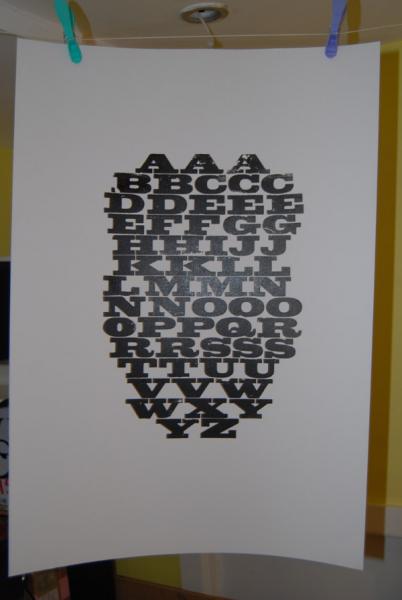Type ID please
Hi - I recently rescued these from getting broken up and sold off one by one. I’m now type rich, cash poor.
Would someone be so kind as to help me with an IDs on them all?
0700 & 0697 I’m fairly sure are of the Clarendon variety, the last ‘fancy’ slab (0696) I haven’t a clue what it is.
The story goes that these came from the printers that used to print Alfred Wainwrights books here in the UK and had been stuck in an attic/loft for years. Naturally they were covered in dust and bird poo.
0697 has obviously taken a beating in many ways - and this is the one that I hope to have new characters made for. If anyone does have a specimen sheet for this I’d be very interested in obtaining a copy to achieve this.
Thanks in advance.

DSC_0700_small.jpg

DSC_0697_small.jpg

DSC_0696_small.jpg
Thanks for saving these from being split up. I wish I had the cash to do the same thing!
Your first two are classified as Antique faces, not Clarendons. The Antiques have sharply squared-off serifs whereas Clarendon serifs curve into the main strokes. Your last one is a little jewel, especially with the concave/wavy tops and bottoms of the serifs. Is there a maker’s mark on one of the sides of the “A”? It would usually be found there and not on the other characters.
Rick
Cheers Rick for the clarification, alas there’s no stamp mark on any of the A’s at all…
Anyone?
Rick is, as usual, spot on about the identification. I would add a clarification that the first image is Antique Extended (or Antique Expanded depending on the manufacturer). The Third face is certainly more elaborate. It appears it have been widely available in the last half of the the 19th century primarily in England (haven’t yet found any example of it being offered in the States), but shows up less after the turn-of-the-century. Most all of the English manufacturers offered subtle variations of this design, but each had completely different names for it. H.W. Calson named this cut Tuscan, B. Joyce named their version Concave, Day & Collins named it French Antique Curved, Stoer Brother & Coles unimaginatively named it Series No 47 in 1899. The earliest this face seems to show up as wood type in the print record is in V. & J. Figgins c.1860 specimen book. They named it Condensed Club Serif.
St Bride Library has the preeminent collection of English wood type specimen books. If you can’t find a proof of a full specimen, your best bet (though it won’t be complete) is to reconstruct it from the historical record.
Thanks David, most helpful.
Though to be honest I’m still struggling with the middle Antique.
I found this specimen over at the Rob Roy Kelly Collection:
http://www.end-grain.net/wp-content/uploads/2009/12/AntiqueAWT2.jpg
Which looks similar if you squint, but as I can’t do that forever it’s obvious it’s not the same face…. drat.
And Carl Middleton has this in his collection:
http://www.flickr.com/photos/42324214@N08/3992826590/in/set-721576224170...
At present I’m tracing what I have and re-drawing the rest of the characters to make the font complete. A friend has access to a lazer cutter so that appears to be the way to go.
And as for St Brides - lovely place, could spend years in there and never get bored!